BIG Special Discounts Available NOW! Check out our Products
Leader in Waste Management Solutions | PROUDLY MADE IN THE USA ![]()
Leader in Waste Management Solutions | PROUDLY MADE IN THE USA ![]()
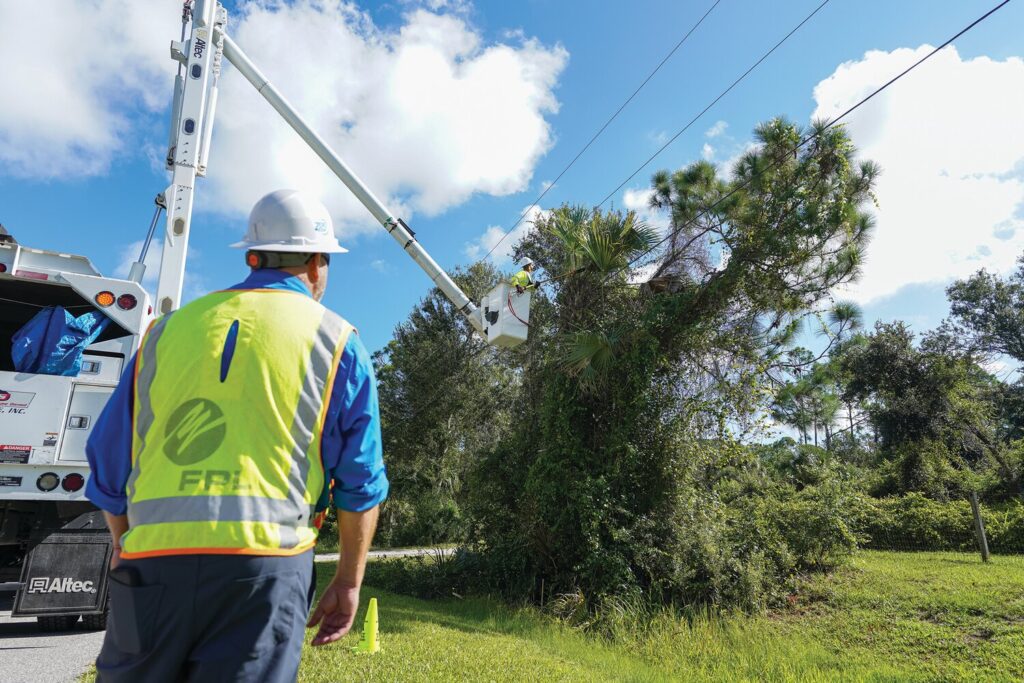
As hurricane season sweeps across the Gulf and Atlantic coasts, emergency crews, linemen, and disaster response teams are gearing up for unpredictable weeks ahead. When nature strikes, access to basic human needs—like safe bathroom facilities—is often the first thing to disappear. That’s where Brief Relief becomes mission-critical.
Whether your team is restoring power, clearing roads, or providing aid, bathroom access can be nonexistent during storms. Flooded streets, power outages, and closed public buildings make traditional options unreliable or dangerous.
Health risks from improper waste disposal
Lower crew morale and comfort
Productivity loss from long detours just to find a restroom
Brief Relief provides portable urinal bags and disposable solid waste bags designed to be:
Leakproof and odor-sealing
Shelf-stable for years—perfect for emergency kits
OSHA-compliant and FEMA-accepted
Quick to deploy in vehicles, trailers, and field command posts
Our Field Lavatory Systems are trusted by FEMA contractors, municipal utility departments, and disaster relief nonprofits nationwide.
🚨 Utility Crews restoring power in storm zones
🚑 First Responders who need to stay mobile and focused
🚛 Truckers and Contractors rerouted to emergency sites
🏕️ Disaster Shelters and mobile response teams needing safe, hygienic solutions fast
According to the National Hurricane Center, the best time to prepare is before the storm arrives. Disasters don’t wait for you to find a restroom. Stock your crew, fleet, or emergency kits with Brief Relief now—so when the storm hits, your team is covered.
Shop Our Emergency-Ready Sanitation Kits Now
✔ Peace of mind
✔ Portable comfort
✔ Ready when it matters most
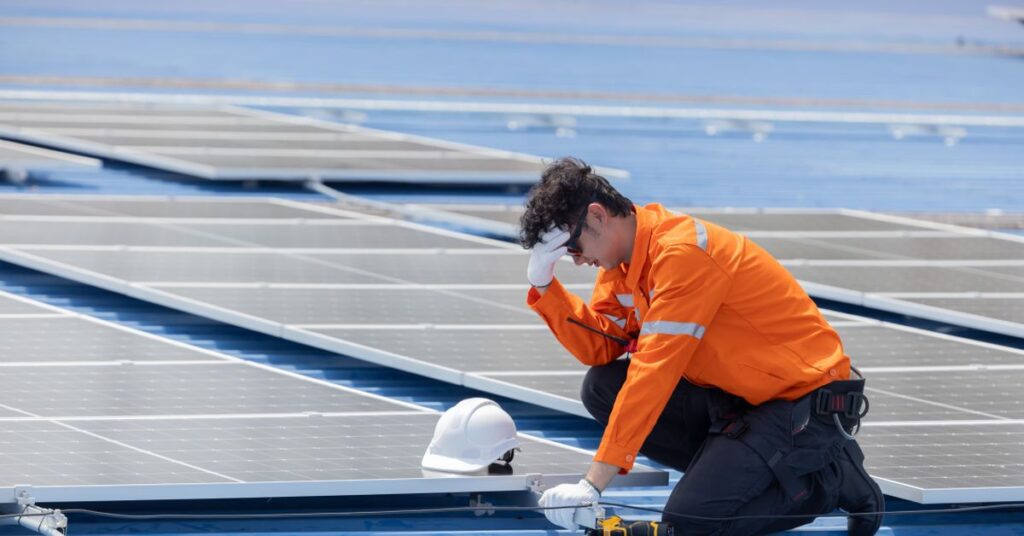
As the summer heat ramps up across the country, utility crews, road workers, and field technicians face more than just long hours—they face sweltering conditions with limited access to restrooms. While hydration is emphasized during hot months, one topic is often ignored: safe, sanitary, and accessible bathroom solutions. That’s where Brief Relief steps in.
When you’re working 10–12 hour shifts in 90+ degree heat, holding it in isn’t just uncomfortable—it’s a hazard. Workers who avoid using the bathroom are more likely to dehydrate, experience fatigue, or lose focus on the job.
Without nearby restrooms, workers often face two poor choices:
Leave the jobsite and drive miles to the nearest gas station
Hold it in and risk health complications or distractions
Both options lead to productivity loss, health risks, and low morale. That’s why utility companies and contractors are turning to portable waste solutions like those from Brief Relief.
In 2023, a major telecommunications contractor in Florida equipped their field techs with Brief Relief Disposable Urinal Bags after multiple workers reported symptoms of heat exhaustion from restricting water intake. The result? A 22% decrease in heat-related safety incidents and a noticeable boost in worker satisfaction during service calls.
Encourages Proper Hydration:
When restroom access is available, workers drink more water—lowering the risk of heat stroke.
Avoids Unsafe Conditions:
Workers no longer have to use unsanitary porta-potties or walk offsite.
Boosts Productivity:
Crews can stay on location without wasting time searching for facilities.
Promotes Hygiene Compliance:
Our bags are leakproof, odor-sealing, and contain antimicrobial agents.
To keep crews safe and compliant during summer field work, every work truck should carry:
✅ Disposable Urinal Bags
✅ Solid Waste Bags
✅ Hand Sanitizer
✅ Electrolyte Packs
✅ Cooling Towels or Shade Structures (when possible)
✅ Gloves for Safe Handling
➡️ See our complete Emergency Sanitation Kits for field crews.
Q: Can Brief Relief bags be stored in hot trucks?
Yes. All Brief Relief waste bags are built with durable materials that withstand high temperatures and prolonged storage.
Q: Are the bags safe and odor-free after use?
Absolutely. The absorbent gelling powder neutralizes odor and solidifies liquid waste instantly.
Q: Who uses these during summer months?
We work with utility crews, cable installers, truckers, construction teams, emergency response units, and outdoor event staff.
This summer, ensure your team stays productive, compliant, and comfortable by giving them the bathroom access they need—right where they are.
👉 Shop Brief Relief Now and give your crews the confidence to stay hydrated and focused, no matter how hot it gets.
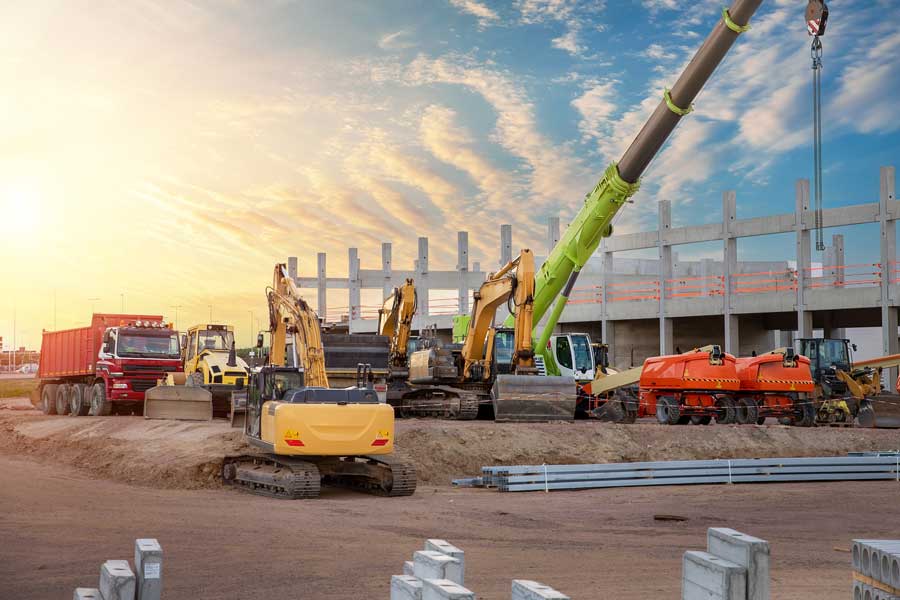
Summer Construction’s Hidden Problem
Every summer, job sites ramp up—more hours, more workers, more productivity… and more logistical problems. One issue that often flies under the radar? Sanitation.
When the nearest porta-potty is a five-minute walk—or worse, there isn’t one at all—time (and productivity) takes a hit. That’s where BRIEF RELIEF comes in. Designed specifically for industrial and field work, BRIEF RELIEF’s portable bathroom kits and urinal bags offer a safe, sanitary, and OSHA-compliant solution right on the jobsite.
The Problem with Traditional Solutions
Most job sites use porta-potties—but they:
Multiply that by 20+ workers several times a day, and you’re looking at lost hours and money.
BRIEF RELIEF products are made to work where you do. Their disposable urinal and solid waste bags are:
Products like the Liquid Waste Bag (BR608) and Disposa-John (BR500) make it easy for workers to take care of business quickly, safely, and hygienically—without leaving the job site.
Using BRIEF RELIEF products isn’t just a convenience—it’s a cost-saving tool.
Here’s how:
“It saves us about 10–15 minutes per worker per shift,” says a construction manager in Texas. “Multiply that by 50 people and it adds up.”
During summer:
High temps make enclosed porta-potties unbearable
Workers may skip hydration to avoid bathroom trips
Heat exhaustion risk increases
With BRIEF RELIEF, workers don’t have to choose between staying hydrated and staying comfortable.
Each WAG Bag® or urinal bag includes:
Eco-safe gel that solidifies and deodorizes waste
Sealing zip-top outer bag
Optional toilet paper and hand sanitizer wipe
They’re compact, easy to store in work trucks or toolboxes, and ready when needed.
This summer, don’t let poor sanitation slow your crew down. BRIEF RELIEF makes staying compliant, clean, and efficient easy, no matter how remote the worksite.
Be prepared. Be productive. Stay brief.
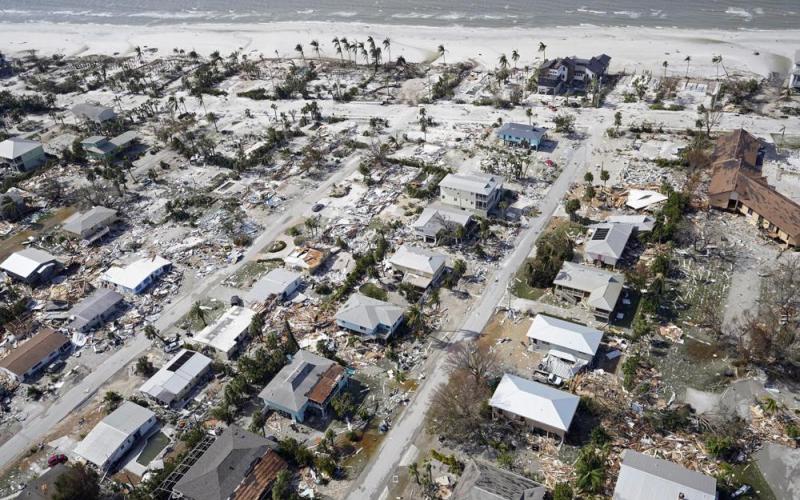
The need for high-quality disaster relief is vital, no matter where you live. Over the past few decades, natural disasters have killed between 40,000 and 50,000 people per year worldwide. Whether communities are leveled by tornadoes, displaced after hurricanes, or left without power after an earthquake, people who experience disaster can’t simply be left to figure it out themselves.
As a company dedicated to providing sanitary, portable toilet solutions for businesses, the military, and first responders, we understand the importance of having the best equipment, materials, and supplies available.
But what do support organizations really need to help survivors through this hardship? Let’s discuss the 6 Rs of disaster relief resources that support organizations need to have ready to bring to disaster sites.
First up? First aid. Especially in disasters that result in mass casualties and injuries. Relief organizations must assess the damage and determine the amount/type of first aid kits, medical equipment, and medications needed to treat the most pertinent injuries.
This can be extra challenging with significant infrastructure damage (think – destroyed or blocked roads, no running water, and no electricity).
Next, aid organizations need to be prepared with enough food and water. People can only go so long without water (no more than three days), so getting enough potable water for drinking and washing becomes a top priority. This can also be challenging to transport when thousands are impacted. The CDC recommends that each person have a gallon of daily water for drinking and sanitation.
Survivors also need access to non-perishable food items that can last without access to electricity. Easy to open, nourishing, and nutritious food must be available. And don’t forget – disasters don’t discriminate by age. Infants and babies need access to formula and soft foods as well.
Victims of disasters need access to portable, short-term shelter. Tents, tarps, blankets, and sleeping bags need to be set up in a space where families can be reunified.
This isn’t as simple as it sounds. Especially in areas where infrastructure has been significantly damaged, it can be challenging to find locations for temporary shelters that are safe, accessible, and have access to essential resources like water and sanitation.
Aid organizations must have a plan to provide portable bathrooms for disaster relief to keep conditions sanitary. That is – unless they want a health disaster to pair with a natural disaster. Some jaw-dropping innovations, such as WAG bags (waste alleviation and gelling bags), portable commodes, and bucket commodes, can make this easier. While not all portable bathrooms are created equal, Brief Relief offers the only NASA-developed gelling agent that deodorizes and solidifies waste within 10 seconds, leaving survivors with an easy, odor-free, sanitary way to go when bathrooms are unavailable.
The fantastic thing about these next-level portable bathroom solutions is that they can be more easily transported than bulky porta-potties or bathroom trailers. They also use eco-friendly disposable waste bags that can be purchased in large quantities and thrown away in the regular garbage. Relief organizations can even provide portable toilet privacy tents or entire portable lavatory systems that can be set up in minutes, serving private restrooms in a pinch.
Landlines and cellular networks can’t be relied on during a disaster. Relief organizations must coordinate efforts, stay updated on emergency alerts, and efficiently make decisions to adapt as the disaster progresses. Communication can make or break success. Radios and satellite phones are indispensable communication alternatives. These devices are designed to operate independently of local infrastructure, allowing communications to continue.
After a disaster, affected areas are often littered with debris, such as fallen trees, collapsed buildings, and damaged infrastructure. Trucks, bulldozers, and heavy machinery are needed to clear obstructions quickly and safely and repair damaged infrastructure. Large vehicles are also required to transport materials (tents, tarps, and supplies) to disaster-stricken areas and move personnel and supplies. This means being prepared with the correct equipment and the right amount of equipment for the specific disaster.
Responders will also need other recovery tools, such as gloves, ropes, ladders, masks, goggles, and other protective equipment. For some disasters, aid workers use thermal imaging cameras to locate and extract survivors.
When it comes to disaster relief, government relief agencies and other non-government organizations need to be able to count on the quality of their specialized resources and technologies. By equipping organizations like FEMA and NGOs with state-of-the-art medical supplies, innovative sanitation solutions, sustainable shelter options, and efficient logistical support, we empower them to respond effectively and expedite recovery efforts.
Join Brief Relief in supporting disaster relief efforts with innovative, sanitary portable restroom solutions. Together, we can ensure communities receive the essential resources they need to recover and thrive.
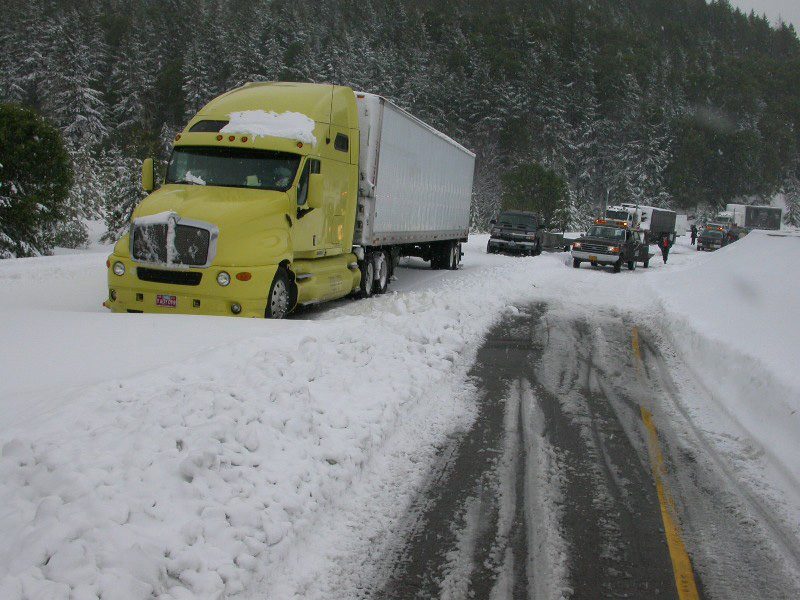
This comprehensive winter guide will feature vehicle readiness tips, winter maneuvering strategies, and essential emergency items. Brief Relief provides portable bathroom and shelter solutions designed specifically for professionals who are constantly on the move.
Winter Storm Heather 2024 was a stark reminder of winter weather’s uncertain and often hazardous nature. Truckers and first responders faced formidable challenges as the storm rendered roads impassable and disrupted critical operations. So much so that a 70-mile stretch of Interstate 80 was shut down. Closures like this stranded many semi-trucks and left many idle, leading to considerable economic repercussions for trucking companies, as idle trucks meant drivers weren’t earning, and companies weren’t making money.
Winter Storm Heather highlighted the critical need for preparedness for truckers, emergency responders, and disaster relief crews. Extreme conditions, from heavy snowfall to icy roads, pose personal safety risks and hamper crucial operations. Being prepared means quickly and effectively responding to ensure the safety and well-being of frontline workers.
For those who spend their workdays on the move, a vehicle is more than just a mode of transport—it’s a central hub of activity, a haven from the winter chill, and, at times, the only source of warmth. Ensuring your vehicle is winter-ready is critical to the safety of commercial drivers.
Key steps include:
For truck drivers, road workers, first responders, and disaster relief crews, winter brings many challenges that demand rigorous preparation. When snow and ice transform the landscape, these individuals are the lifelines of our roadways, and their safety and comfort are paramount.
A well-prepared roadside kit is essential for truckers and road crew professionals who contend with the challenges of winter travel. Your kit should equip a flashlight for those dark, wintry nights, a multi-tool for on-the-fly repairs, and a pocket knife, which can be crucial for cutting seat belts in an emergency. A comprehensive first-aid kit is a must-have, packed with band-aids, bandages, gauze, tourniquets, and ointments to manage burns and facilitate healing.
Given the unpredictable nature of winter weather, it’s essential to have non-perishable, energy-rich food items on hand. Protein bars, MREs (Meals, Ready-to-Eat), nuts, and candy can be vital in keeping energy and morale levels up if you’re waiting for help to arrive. Your kit should include thermal blankets, heat packs, a heavy jacket, and gloves to keep warm. Additionally, a compact snow shovel and traction mats are essential for digging out your vehicle and gaining traction on slippery surfaces.
Such a kit keeps you prepared for the unexpected, helping maintain safety and comfort until conditions improve or assistance reaches you.
Among these essentials, one must pay attention to a crucial component: the need for proper sanitation. Portable toilets are not just a convenience but necessary for truckers and road crews who spend hours in remote locations. The Waste Bag by Brief Relief is a prime example of a portable toilet solution tailored for truckers. It’s discreet, easy to use, and environmentally friendly, with a gelling agent that solidifies waste and neutralizes odors. This level of sanitation is critical, not just for personal hygiene but for environmental health as well.
A more advanced kit is advisable for those who may find themselves stranded or working in severe weather conditions. An enhanced kit incorporates the previously mentioned Waste Bag along with a portable toilet or portable toilet shelter designed for prolonged usage. These units are sturdy, offering a higher level of comfort and convenience. They are exceptionally vital for truckers on the road for days, road workers, and emergency personnel who work long shifts in stationary locations.
The presence of reliable portable toilets for commercial drivers serves several critical functions. Having a portable toilet shelter ensures that drivers and crews remain on-site during emergencies, maintaining operational continuity. It prevents the interruption of essential tasks for sanitation needs and safeguards against the health risks associated with unsanitary conditions.
Brief Relief designs portable toilets with the environment and user experience in mind. By providing a clean and private space, they uphold the dignity of workers while also preventing waste from contaminating nearby lands and waterways, which is crucial in winter when the spread of pathogens can be a concern.
As we continue to face the challenges of winter, having a well-thought-out roadside kit, complete with a reliable portable toilet solution, is not a luxury—it’s an essential aspect of road safety. By choosing products like Brief Relief’s Waste Bag and portable toilets, truck drivers, road workers, first responders, and disaster relief crews can remain focused on their vital roles, knowing their needs are met with solutions that offer safety, privacy, and respect for the environment. These products reflect a deep understanding of the unique requirements of mobile workers, such as truckers and emergency responders. Brief Relief’s commitment lies in providing technical solutions that genuinely improve working conditions in the field.
Winter Storm Heather 2024 showed us how powerful nature can be and how important it is to be ready for anything. Being prepared is vital for people in the trucking, emergency response, or disaster relief sectors. Being prepared means making sure your vehicles can handle the harsh winter weather. You must also have the right tools and supplies to keep you safe and comfortable. Make sure to visit the Brief Relief Shop for waste bags, portable bathrooms, and commode systems. Workers who prepare well with essential items and solutions can confidently face winter challenges.

Technology always marches forward, and truck drivers have certainly benefited from technology advancements over the past couple of decades.
While technological advances surrounding location, mapping, and time logging have already transformed the way truckers work, trucking companies continue to adopt transportation tech as part of their day-to-day operations.
These advancements continue to help truck drivers reach their destinations and back in a safe, comfortable manner and make their jobs a little easier.
Today’s leaps ahead aren’t necessarily self-driving trucks or “Jetsons”-like flying vehicles, but modern trucking tech has absolutely improved the truck-driver experience.
Location tracking has been around for quite awhile, and the ability to chart your course with your smartphone makes finding a destination markedly easier. Dynamic routing optimizes delivery routes, reduces time on the road, and saves fuel — all vital metrics for trucking companies. This means slow traffic or stops on the highway, which previously might have cost drivers precious hours, can now be anticipated, giving drivers time to find an alternate route.
They say there’s an app for everything, and in the trucking world, that’s pretty close to being true. Need to track your driving route, avoid accidents, and optimize your trip? There’s an app for that. Need to find the best place for cheaper fuel?
There’s an app. Need something to track inspection and maintenance schedules? They have one. Need to track individual driver performance, including mileage, hours, fuel, service costs, and average cost per mile? You know there’s one.
Smartphone apps make tracking all of these things easier and faster while keeping the information in the palm of your hand, improving tracking and monitoring, safety, and organization. Just be sure to stay off your phone while driving!
In-cab cameras have been around for a while, but today’s dash cams have made them mainstream for anyone who wants one. Camera systems provide protection for vehicles, and more recent advancements mean streaming, night vision, and high-definition images uploaded to the cloud. Dash cams also provide protection for trucking companies, particularly in lawsuits involving accidents or fraud.
When transporting goods that need to stay below a certain temperature, temperature tracking helps ensure your load is safe and sound. As part of the Food Safety Modernization Act, truckers hauling food are required to have a way to ensure sanitary transportation for their cargo.
As a result, most refrigerated units today are fitted with a temperature-tracking device, which not only monitors the in-trailer temperature, but sends readings to the fleet management platform with GPS positioning.
As an early-warning device, temperature trackers alert drivers and management to temperature increases, allowing drivers to pull over and investigate (and correct issues if they’re able). The results are increased food safety and a higher rate of safe delivery, which means more money to shippers.
Though self-driving vehicles are making truck drivers nervous for their jobs, the development of collision mitigation technology undeniably helps prevent accidents, reduces the risk of human error, and saves lives.
The use of proximity-sensing technology to alert drivers to potential crashes, radar detects hazards both in front of and in the blind spots of trucks. Collision mitigation systems are quickly becoming standard on new rigs and are a vital part of today’s truck-driving experience. They can also be retrofitted to work on existing trucks.
Time off the road is time wasted, and nothing wastes time like unscheduled stops. Products like Brief Relief’s Daily Restroom Kit® can help truck drivers make a quick stop for relief rather than having to track down a rest stop or resort to using a dirty gas station. With Brief Relief products, it’s a quick stop on the side of the road, and your potty is self-contained, sanitary, and ready to dispose of properly.
ELDs electronically track and record truck drivers’ hours of service to ensure drivers are operating within the limitations set by the Federal Motor Carrier Safety Administration. Once a certain threshold has been met, the truck is no longer able to drive.
Meant to enforce driving limits for the safety of drivers and the public, ELDs are required to be installed in trucks. Some owner-operators and small-fleet drivers grouse at the idea, but ELDs are vital pieces of safety equipment that makes truck drivers, company owners, and the general public safer.
Despite these advancements in technology, today’s truck drivers still have one of the most important jobs in the world. In the age of IoT, they have access to more tricks, tips, and new devices than ever, and they deserve to have all the advantages they can.
That’s one of the reasons why Brief Relief creates portable bathroom solutions for truckers who know when they have to go. Truck drivers can employ many of Brief Relief’s products to help keep them going when they’re going. Check out Brief Relief’s full line of products, and see which can help you arrive at your destination safely and quickly.

Wesco/Anixter is a leading provider of B2B distribution, logistics services, and supply-chain solutions. They also work in storm-related restoration efforts, particularly in the utilities business. A Fortune 200 company, they have 18,000 employees globally and $22 billion in revenue.
Working with major utility companies during natural disasters, including restoration efforts and the mitigation of major storms and fires, Wesco/Anixter is the largest utility distributor in the market focused on live post-storm restoration efforts. Their goal is to work with major utility providers to quickly restore power and utilities services to places where it has been knocked out by natural disasters.
Logistical concerns for these types of events are massive, and Wesco/Anixter has to have a tremendous infrastructure in place to ensure they can restore utilities as quickly as possible. The first step is response readiness, because planning capabilities are limited. They might know ahead of time which state a storm is going to hit, but it’s impossible to predict which communities will be affected.
Setup is key. Establishing camps and providing the supplies necessary for survival are vital yet massive undertakings. These camps are the nerve centers for the restoration, providing supplies and equipment for thousands of workers who will be on site. Restoration efforts often include a massive amount of resources. Bringing in dozens of campers, electrical equipment, ice trucks, porta-potties, generators, and emergency supplies of food and water is the first job. Maintaining an inventory of these critical supplies is crucial.
The first three to five days are critical to the restoration efforts and whether the project will be successful. Often, there is not only no power, but, if cell towers are down, no real communications capabilities. That leaves satellite phones for Wesco/Anixter to call in the specific supplies they need.
Challenges on the front end don’t just include supplies, but also manpower. Recruitment efforts often extend all over the country when thousands of utility workers are needed, well beyond the number stationed locally. Many are hesitant to work on Day 1 under the conditions of no power, running water, or communication with the outside world. Many times, those initial responders won’t yet have ways to satisfy basic needs like food, water, and using the bathroom.
Having an inadequate number of people willing and able to provide first-line help effectively means failure for the restoration efforts. Time is of the essence when delays could mean the difference between life and death for some of the people affected.
For Wesco/Anixter, solutions mean taking action. They express appreciation and interest in the value of their products, providing solutions for those first crucial hours so responders can have their basic needs met from the outset. Brief Relief’s portable bathroom products include liquid and solid waste bags, commode systems, and portable privacy shelters, along with all of the accessories needed to provide supplies for safe and sanitary efforts.
Brief Relief is a top manufacturer of portable restroom products, providing best-in-class worksite solutions to aid in the safety and productivity of employees. Out in the field, in storm-, fire-, or disaster-damaged areas, Brief Relief products can provide an emergency stopgap solution when restroom facilities are limited or unavailable. This effectively eliminates a major barrier for utility-worker recruitment efforts, improves efficiency, and reduces the time to complete restoration efforts.
Brief Relief products can be used anywhere. Line workers often won’t even have to come out of their lifts to take care of their business, saving critical time and energy so they can keep their focus on restoring power, cellular service, and water to the area.
Brief Relief products are safe, sanitary, easy to use, discreet, cost effective, and help increase productivity. You can learn more about Brief Relief, their products, and how to obtain a supply of products at briefrelief.com.
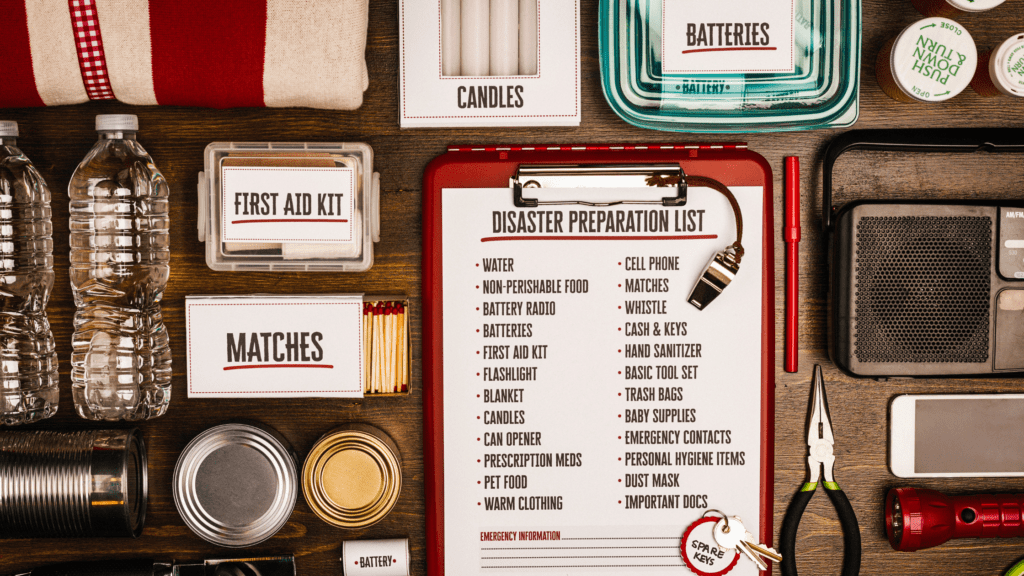
When was the last time you updated your disaster prep kit? That is — if you have one at all. According to a 2020 Center for Disease Control and Prevention (CDC) survey, only one in three people have an emergency supply kit. Having a well-stocked kit can make a big difference in the event of a hurricane, so it’s important to go beyond bandages and bottled water. Think you’ll be ready when disaster strikes? See which of our these five emergency prep tools you have in your kit.
Electricity is often the first thing to go during a natural disaster, and having a way to generate energy can make or break a situation. Classic generators can come with a hefty price tag, and portable options aren’t ideal for wet conditions. Solar chargers are a more affordable, flexible option, and many of them are designed to be water-resistant.
With solar chargers, you can rely on your power bank as long as you have access to sunlight. Some models are even made for low-light conditions, so you don’t have to worry about overcast days after a hurricane.
According to the CDC, flashlights are the most common item people keep in their emergency supply kits, but it’s important to have functional, convenient gear in a disaster. Level up your kit with wearable body lamps that keep your hands free for whatever comes your way. Wearing a headlamp or light-up armband can help you navigate in the dark without worrying about dropping your flashlight or juggling bulky supplies.
Because they’re always with you, body lamps are also a convenient way to increase your own visibility to those around you, such as family members or first responders. When the power goes out, you can rely on your body lamps to avoid fumbling around in the dark — just remember to pack extra batteries or charge them when a major storm is approaching.
One of the first steps to take when a hurricane approaches is securing a safe water supply, with extreme weather having the potential to contaminate water sources. Severe flooding can shut down water treatment plants, damage pipes, and introduce dangerous chemicals into your home’s tap water. Setting up a store of bottled water is a great way to start, but having a water purifier on hand ensures that you’ll never run out.
Quality water filters can often filter hundreds to thousands of gallons of water, removing microplastics, parasites, and even lead. Options ranging from lightweight straw filters for personal use to large, communal gravity filters make it easy for you to pick the right option for your kit.
Radios allow you to access vital weather updates during a natural disaster even when you can’t access the news on your phone or TV. When choosing your radio, consider opting for a model with a hand-crank generator. By putting in a bit of elbow grease, you can trust that your radio will always have power, even if you run out of batteries. Many models also have regular batteries and solar panels, giving you plenty of options to stay connected with critical weather information.
When preparing for a disaster, thinking about where you’ll go number two is rarely the first thing on your mind. But the need to use the bathroom stops for no one, not even a hurricane. Many people turn off their main water valve during a hurricane; this is a great way to prevent flooding, but it also means sacrificing the comfort of a functional toilet. During a disaster, you may not know how long you’ll be without functioning plumbing, which makes having a clean, comfortable emergency toilet such a game-changer.
While you may have seen makeshift toilets made from buckets and cat litter, there’s a better way to handle your bathroom emergencies in the face of a true disaster. Modern portable toilets like the briefcase commode are tidy and discreet, making them easy to store and even easier to use. The best portable commodes are lined with durable waste bags, which contain a high-tech powder that neutralizes odors and eliminates biohazards. Because the powder turns into a gel when it interacts with waste, you can simply seal the bags up and dispose of them like regular trash without worrying about tears or spills.
Emergency preparedness is all about having the tools to thrive when the conditions aren’t so perfect. Brief Relief’s line of portable commodes can help you bring dignity and comfort to even the most disastrous of situations.
Although Brief Relief’s innovative, sanitary products are great in an emergency, they aren’t just for worst-case scenarios. They’re easy to transport and clean, so you can bring them with you to remote job sites, campsites, or any other situation where you need to go while on the go. If you’re ready to invest in your comfort and peace of mind, explore our full product line.
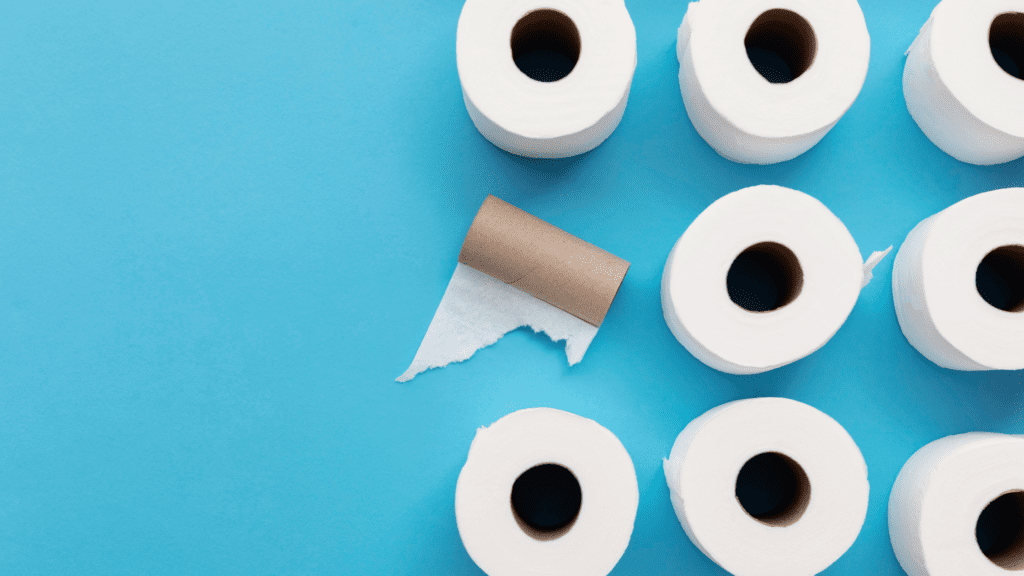
For as long as people have been going to the bathroom, they’ve been having bathroom emergencies. Whether someone just happens to be in the wrong place at the wrong time, or they get stranded somewhere without access to facilities, there are painfully memorable times where they just couldn’t hold it.
When nature calls, there are only so many times you can hit “decline” before you absolutely need to go. If you can’t find a restroom, this means relieving yourself in a less-than-ideal location or missing out on big moments to avoid an embarrassing accident.
If you’ve had a close call on your way to the bathroom, you’re definitely not alone! Here are some cautionary tales of people in potty peril who could’ve used some Brief Relief in their lives.
Sometimes, the solution to your bathroom woes only causes more problems. One Reddit user recounts their experience of sudden digestive danger while doing maintenance on a client’s ice machine. Thinking quickly, he ran to his work truck, threw a trash bag in a bucket, and released the floodgates. Not wanting to stink up his van permanently, he tied up the bag and left the doors open before returning to the job.
Crisis averted, right? He thought so too, until he saw the client’s dog frolicking in the yard, the sack of poo clenched in his jaws. Thankfully, the pup dropped the bag before retreating to the client’s home, but not without scaring the literal crap out of that poor maintenance tech. Talk about a workplace hazard!
In response to the above story, another user in the HVAC industry recounts rushing through a job because he was so distracted by the storm brewing in his bowels. Of course, the job was in the middle of nowhere with no public restroom or emergency toilet in sight.
After hurriedly installing a replacement part and seeing no improvement, he called up the previous technician to gather more details about the repair. And what did he learn? That tech had also sped through the job, barely paying attention because he needed to go to the bathroom badly. Legend says that HVAC professionals are still frantically trying to complete that repair (with a turtle pokin’ out) to this very day.
Not even the toughest among us are immune to the call of nature. This paratrooper shared his story of being cursed with a full bladder during a jump. Usually, keeping yourself hydrated is a smart move to stay cool in the searing sun, especially when you’re sweltering under tons of gear for hours on end. Unfortunately for this soldier, all that water went right through him just as he was about to leap from a plane.
Try as he might to hold it in, the shock of his parachute opening also unleashed his bladder. Despite the distraction of bursting with urine mid-air, he made it to the ground safely, albeit damp. While recounting his tale, he mentions that if he had known he wouldn’t make it to a bathroom, he would have just peed his pants earlier. Not only would that have saved him some serious discomfort, but he could have focused a bit more on sticking his landing.
Everybody poops, even the rich and famous. Lil Nas X was a public reminder of this at a concert in Atlanta, when his brief costume change turned into an impromptu bathroom break. Fans shared a video of his remote announcement — live from the backstage restroom — that he needed a couple of extra minutes before returning to the performance. His fans clearly didn’t mind as they responded with a wave of cheers, clearly relating to his blunt, honest admission.
Lil Nas X most likely had comfortable facilities backstage, but that’s not always the case at performance venues. Any festival-goer is all too familiar with the trying to avoid thee smelly, overflowing Porta Potties. It’s no wonder that both fans and musicians may be tempted to hold it until it’s too late.
Having a clean, private place to go can make or break those moments when you suddenly feel the urge. At Brief Relief, we specialize in solutions that are easy to take with you and even easier to maintain. Our portable commodes, privacy shelters, and durable waste bags combine to create a discreet solution for job sites and events.
Anyone can be the victim of a bathroom emergency, but this problem is more exasperating for people who have a digestive condition, such as the estimated 10% to 15% of Americans who live with IBS. Having access to a portable commode can help everyone handle their business with dignity.
Because Brief Relief bags contain polymers and enzymes that neutralize waste into an odorless gel, they’re durable enough for even the most rugged conditions. Regardless of where you are or what you’re doing, you can relax knowing that the next time you really have to go, you’ll have a safe, subtle, and comfortable way to take care of business.
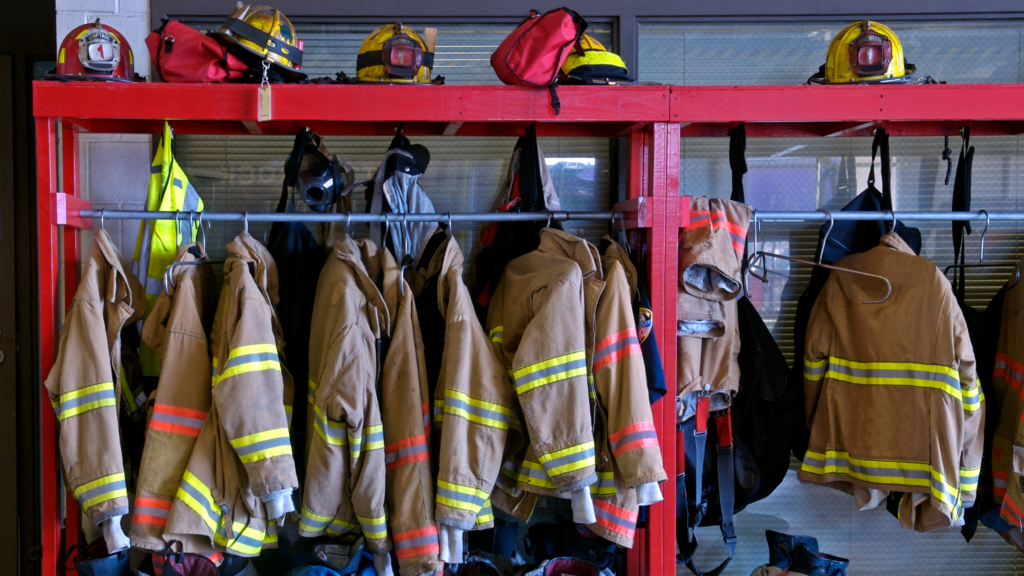
Brave police officers and firefighters put their lives on the line daily while protecting and serving. Having to think of so many important factors when it comes to saving lives, no one would ever imagine that one of life’s basic necessities would also have to factor into their thinking: where and how to use the restroom.
These bold men and women are never certain what situations they may encounter on the job, and they don’t always have access to regular bathroom facilities.
Whether their patrol routes are lacking in public restrooms or they’re battling blazes far away from basic necessities like electricity and running toilets, dedicated public servants have a lot to contend with when it comes time for a bathroom break, which makes their jobs harder.
Men and women in blue chatted back and forth online in a thread on forum.officer.com, saying:
“Like a dog, I have left my mark all over town to include people’s backyards (residential alarm calls).”
“Pick a dark corner in my county or the side of a redwood tree hidden from traffic and I’ve probably ****ed there. One thing I learned was to keep track of construction sites and farms that kept unlocked porta-potties on site.”
“For us city cops, it’s not out of the ordinary to go call to call from the start of shift to the end.”
“You do what you have to do.”
… Yeeeea. We could imagine there are more “stories” there, but we won’t ask. Instead, let’s look at the inconveniences putting our first responders in these positions in the first place.
The Issues around First Responders and Bathroom Breaks
For police officers, needing to find a bathroom while on patrol is one of the most annoying, uncomfortable, and unhealthy drawbacks of the job. It’s a bigger problem than you would think.
And there are many other considerations:
No Public Restrooms Nearby
During the day, officers and fire crew may have restaurants or building lobbies they know they can count on, and many officers did mention that they usually make stops at public places to use the restroom or even stop at home if it’s on their patrol route. But what if they’re working overnight? What if their beat is more suburban or rural, with no public restrooms for miles?
As for firefighters, so many wildfires happen in remote areas, there’s a solid chance there won’t even be a bathroom to be found for miles around. Plus, even if there was a bathroom available somewhere, the valuable time needed to find and use a bathroom could cost lives. However, bodily functions aren’t known to run our schedules or demands.
They’re Put in a Position to Break the Law
Some first responders may be inspired to find the nearest alley or tree when a restroom isn’t close by, but it’s actually illegal to urinate in public. It would be unacceptable for an officer to get caught breaking the very law they’re meant to enforce, but they’re many times put in positions where they have no choice.
Smile—You’re on Camera!
With doorbell cameras, red light cameras, and surveillance cameras everywhere, not to mention police bodycams, managing to find a private spot somewhere in public is nearly impossible today. A couple officers acknowledged how this is now playing into their restroom woes — some have changed their habits and others don’t seem to care.
“There are way to many cameras out there now……………………….but back in the day.”
“But speaking of cameras, about the time they release body cams the number of ****s I take a day is going to increase dramatically. And John Q. Citizen is going to get a front row seat.”
Today, if first responders don’t watch their surroundings or find a good place to hide, what might start as an innocent effort to relieve oneself on the job could end in a P.R. nightmare if a camera catches the officer and someone posts it online.
Females Are Especially Vulnerable
For female officers and fire crew, picking a tree isn’t really an option! These officers have the additional hardship of having to remove their utility belts (gun holster and all) in order to use the restroom, putting them in a particularly difficult situation. Doing this means their weapon isn’t completely in their control, and they also have to find a secure (and sanitary) place to put it.
One officer said, “As a girl, you have to take off a few layers of gear most of the time. You may be on the side of the road using your doors to shield yourself and thankful that you have napkins, water, and cleaner in your cruiser while cursing all the guys and how easy it is for them.”
So, What’s the Solution to the Potty Probem for Police and Firefighters?
We’re so glad you asked! Some first responder agencies are turning to portable bathroom solutions like Brief Relief to protect their workers and their reputations.
If you served in the military you may remember WAG Bag®s. The sister brand of Brief Relief, Cleanwaste, invented the original WAG Bag®. The WAG Bag® (Waste Alleviation and Gelling Bag) is a disposable human waste bag. And yup, that means exactly what you think it does. It’s a bag for catching and disposing of human waste.
When out on patrol with only a car for privacy, the Brief Relief Liquid Waste Bag is a compact, individually packaged bag for liquid waste that can be used by both men and women. It ensures everyone has a comfortable, sanitary way to go. It contains a unique blend of enzymes and polymers that convert urine into a deodorized gel, just like the WAG Bag®, and each bag can hold up to 20 ounces of urine.
If you’re looking for a complete solution, we recommend The Brief Relief Lavatory System. It includes:
With this gear, police officers and firefighters have everything they need on hand to find a clean, private, and legal way to find relief anywhere in the field.
To learn more about how Brief Relief waste bags help first responders, the military, and
government agencies perform their jobs better, check out our full product line here.
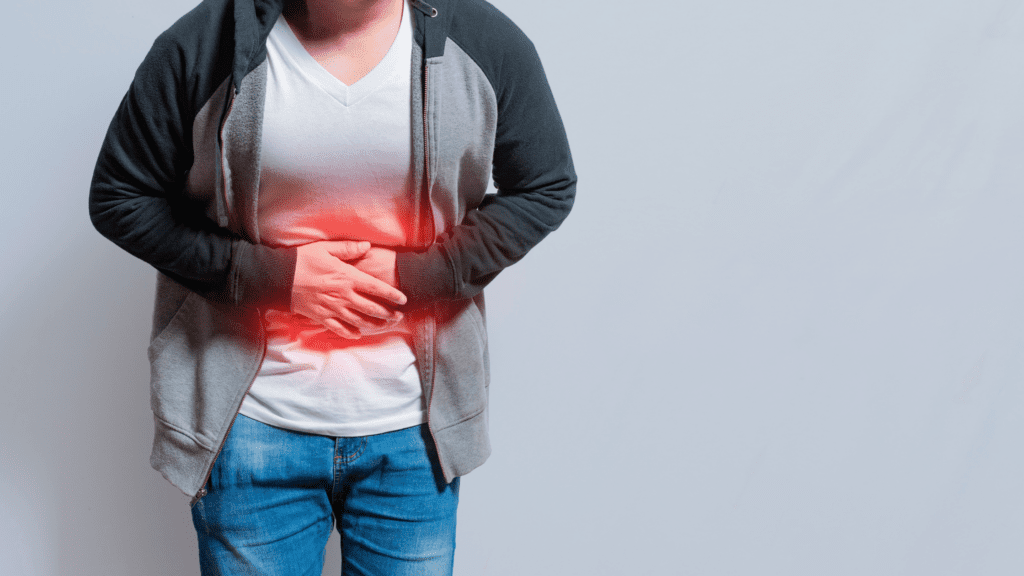
There are a surprising number of businesses and industries where vomiting is a common occurrence.
Did you know that many surgical center patients experience Postoperative Nausea and Vomiting (PONV) after surgery? Typically occurring within the first 24 hours post-surgery, around 20-30 percent of patients find themselves vomiting, while approximately 50 percent of patients experience nausea after being discharged. But medicine is just the beginning when it comes to “customer nausea.”
For example, air travel or water activities can be a nightmare for the estimated 1 in 3 people who are susceptible to motion sickness. Your customers deserve better than a flimsy paper bag — as do the other folks around them!
By providing proper sick bags for customers and clients, you avoid problems like medical professionals wasting their valuable time cleaning up vomit or spoiling an outing for an entire group with a leaky, stinky mess.
When choosing a sick bag for your business, there a several factors to consider:
Durability. Will the bag hold up?
This is probably the most important requirement! You’ll want a sturdy bag that’s both waterproof and leak-proof.
Simplicity. Is the bag easy to use?
A bag needs to be easy to use in a hurry. The last thing a person wants to worry about is whether or not they can even break into their sick bag when the urge hits.
Volume. What is the bag’s capacity?
You’ll want to be sure that your bags aren’t at risk of overflowing. Quality vomit bags usually hold 500 or more ml of liquid.
Security. How easily does it close, and will it stay closed?
If you have a bag with a poor seal, you risk making a mess and exposing germs (not to mention the smell factor).
When it comes to your vomit bags, settle for nothing less than a bag built like Fort Knox.
How do I choose?
Now that you’re better informed about what makes a quality nausea bag, how will you know which one to get? We’ve compiled a short list of affordable vomit bags available on the market.
PukeBag Disposable Vomit Bag
This option is a travel-friendly, cost-effective option that comes in packs of 50.
The mouthpiece makes an easy target, and the bags hold 1500 ml of vomit. The bag has a secure and convenient closure system — just twist the bag and secure the notched ring to prevent leakage.
Durability– 4 stars
Simplicity– 4 stars
Volume– 5 stars
Security– 3½ stars
Overall Rating– 4 stars
HealQu Disposable Vomit Bag
This bag’s ergonomic design is great in an emergency, and it has a 1000 ml capacity. These bags feature a twist and notched-ring closure solution similar to the Pukebag.
Durability– 3 stars
Simplicity– 4 stars
Volume– 4½ stars
Security– 3½ stars
Overall Rating– 3½ stars
VNS Creations Disposable Vomit Bag
This bag is actually made of paper but coated with a special leak-resistant polyethylene layer, making it waterproof but less sturdy than its competitors.
These hold up to 2L and feature a simple metal-tab closure system.
Durability– 2 stars
Simplicity– 4 stars
Volume– 5 stars
Security– 2 stars
Overall Rating– 3 stars
While those listed above are serviceable options, our money is on the Brief Relief Liquid Waste Bag. It’s not just a bag; it’s actually a bag developed using the same technology as the original WAG Bag.
WAG (short for “waste alleviation and gelling”) Bags are a convenient, portable, and sanitary solution when you need to contain waste.
These go far beyond just holding waste. Each bag’s gel-activated technology instantly gels liquid for easy disposal in any normal trash bin.
These bags hold 20 oz of liquid and they’re triple-lined, making them odorless and puncture-proof! Plus, not only do they seal up tight for disposal, these bags can be reopened and resealed if the urge strikes again. No need for a new bag as the contents will re-gel any additional vomit.
Durability– 5 stars
Simplicity– 5 stars
Volume– 4 stars
Security– 5 stars
Overall Rating– 4½ stars
The Choice is Clear
When one of your customers is about to be sick, you want to do everything possible to avoid a messy, smelly leak. This is why Brief Relief’s Liquid Waste Bags are the clear choice. Not all bags are created equal, and quality matters when you’re toting around “delicate” material.
Brief Relief doesn’t just have a near-perfect satisfaction rate. We’re an industry leader in the innovation of safe, convenient products that allow users to manage waste in a dignified, reliable, and environmentally-friendly way … and all our bags are made in the USA.
To learn more about how Brief Relief’s waste bags are providing superior, more sanitary solutions for all, check out our full product line here.
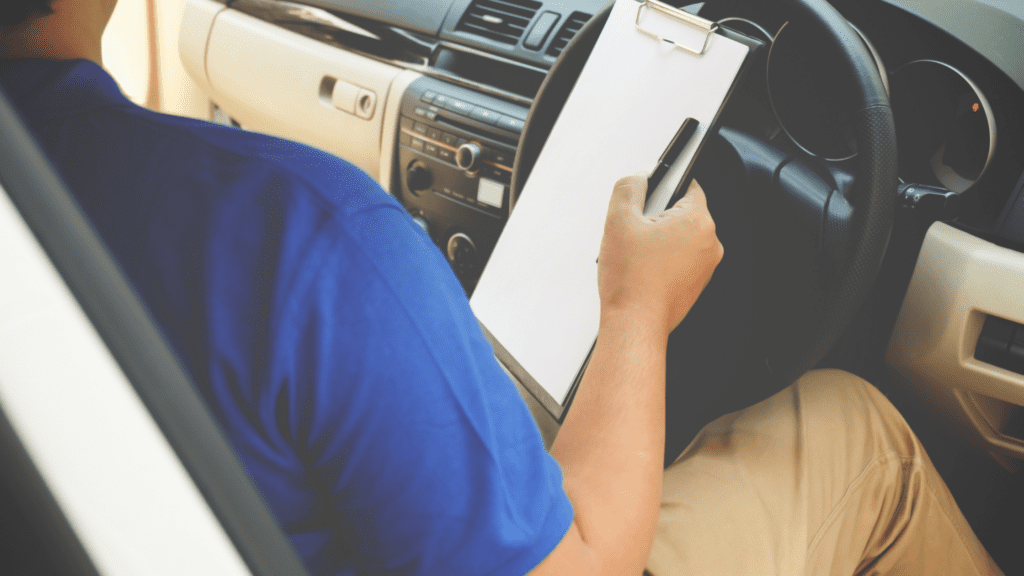
It’s no secret that we depend on the ease of at-home delivery services, especially since COVID darkened our doors. These days, we rely on package delivery services more than ever.
Drivers already face the almost impossible challenge of quickly delivering every single package on their trucks during a shift, but you may not realize how incredibly unsafe being a delivery driver can be!
Drivers have to contend with threats ranging from unsecured dogs to actual gun violence, all while just trying to do their job and stay on schedule. So what are some of the ways your company can help keep drivers safe en route?
Hazards Faced by Delivery Drivers
For one whose entire job takes place in a moving vehicle, there is the obvious risk of auto accidents. Here are some ways you can help protect your drivers on the road.
The Risk of Violence
The threat of violence against delivery drivers is up. In fact, last spring, almost 2,000 drivers signed a petition calling for stricter safety measures after several drivers were actually shot at!
While you as an employer can do your best to protect on-the-job drivers by installing cameras and panic buttons in delivery vehicles, much of what happens during a shift is largely out of your hands.
Here are some tips to share with your drivers:
Workplace safety is of the utmost importance, and the world of package delivery services is certainly no exception. And what better way to increase productivity than to have a convenient, fast solution that cuts down on the possibility of lost time, product, fuel, or the drivers’ risk of an incident?
At Brief Relief, we truly care about the safety of delivery drivers. We’re also an industry leader in the innovation of safe, convenient products that allow users to manage waste in a dignified, reliable, and environmentally-friendly way.
To learn more about how Brief Relief’s waste bags are providing safer, more sanitary solutions for all, check out our full product line.
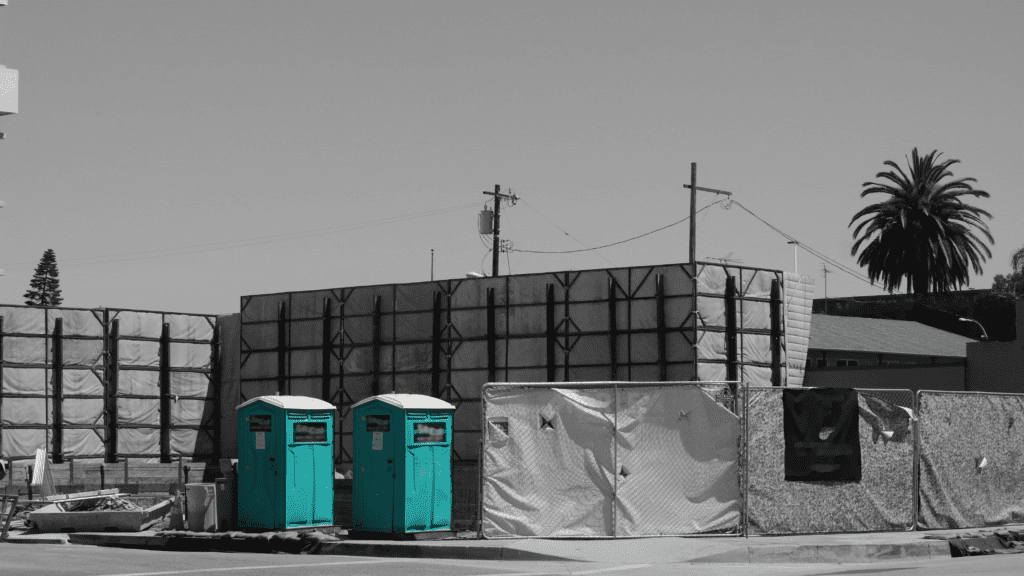
If you’ve ever been on a remote job site or had to use the restroom while working miles away from the nearest service station, we’re sure you’ll agree that Porta Potties are a ubiquitous portable toilet solution.
Unfortunately, many workers find having to use them so unpleasant, they’ll actually hold it in to avoid using one. Everyone knows that putting off using the restroom is hazardous to your health, but what are the alternatives?
What if we told you there’s a better way? What if there was a cleaner, more sanitary (and way less smelly) way to provide portable toilets for your employees in the field?
Introducing Portable Commodes
What’s a portable commode? We’re so glad you asked! Portable commodes are easy-to-transport systems, usually consisting of a privacy tent, receptacle, and toilet seat. But what really makes them a preferable alternative to a Porta Potty is that they’re used in conjunction with a waste bag.
Waste bags are a convenient and sanitary solution when you need to go on the go.
Need more convincing? We’ve rated both Porta Potties and portable commodes across several categories to help you decide which system is right for your next event.
Round 1: Cleanliness
Let’s not beat around the bush; Porta Potties are gross. People are in such a hurry to get in and out that aiming is no longer a priority.
Throw some carelessly-placed toilet paper into the mix, and it’s just a stinky, soggy disaster. If you’re lucky, there might be a hand sanitizer pump inside. If you’re really lucky, it won’t be empty.
With portable commodes, there’s no mess, no spillage, and no smell. The polymers and enzymes in the waste bag turn the waste into a deodorized gel, eliminating any residual odor. Each portable waste bag even comes with ample toilet paper and antimicrobial wipes.
Cleanliness Score:
Porta Potty – 1/10
Portable Commode – 8/10
Round 2: Portability
How easily can you transport Porta Potties to remote locations? Because of the height and weight of a standard Porta Potty, they have to be delivered and carted away on trucks. Some of the heavier ones even require a crane!
With portable commodes, like the Brief Relief Lavatory System, all you need is a flat surface to set up the privacy tent. Place the commode inside, line it with a portable waste bag, and you’re in business!
Plus, since they’re super lightweight and compact, you can throw it in your trunk and avoid the hassle of truck delivery and removal.
Portability Score:
Porta Potty – 2/10
Portable Commode – 10/10
Round 3: Cost
On average, it costs around $100 per day to rent a single Porta Potty. Want the convenient extras like mirrors, purse shelves, and hand sanitizers? It can cost thousands of dollars to accommodate a large crowd, and that’s just for one day!
The Brief Relief Lavatory System costs less than $300. It comes with a privacy tent, a commode with a full-sized seat, and enough supplies for ten people for one day. The tent and commode can last for years when cared for properly, and replacement supplies are around $200 for a pack of 50.
Cost Score:
Porta Potty – 2/10
Portable Commode – 7/10
Round 4: The Stink Factor
I mean, this one kind of speaks for itself. While Porta Potties do make an effort to minimize unpleasant smells (you’ve seen that blue cocktail of chemicals working hard down there), they’re still literally just tiny houses full of gallons of waste. There’s no way around it. The stench of a Porta Potty is otherworldly.
A portable commode, however, doesn’t actually store any waste. You simply seal up the waste bag and dispose of it in any trash receptacle! And before that happens, the powder in the bag eliminates bacteria and odor.
Stink Factor Score:
Porta Potty – 1/10
Portable Commode – 10/10
Round 5: Maintenance
Servicing Porta Potties has been described as one of the worst jobs in the world. As we mentioned above, Porta Potties hold gallons of waste, and they’re typically only emptied when they’re close to overflowing.
Once filled, a crew comes in to stick a vacuum pipe into the bin and suck its contents into a tanker truck for treatment and disposal. It’s an intense, risky job.
With the Brief Relief Lavatory System, there’s minimal cleanup involved. The bags contain all the hazardous waste and are disposed of after they’re used. Simply sanitize your seat and at most, give the privacy tent a quick hose rinse. No muss, no fuss.
Maintenance Score:
Porta Potty – 2/10
Portable Commode – 9/10
Portable Lavatories Are the Clear Winner
It’s pretty clear portable commodes are the cleaner, simpler, and more cost-effective solution for a healthier, happier environment for your workers.
We should know. Brief Relief doesn’t just have a near-perfect satisfaction rate. We’re an industry leader in the innovation of safe, convenient products that allow users to manage waste in a dignified, reliable, and environmentally-friendly way.
Our solutions are perfect for anyone who needs more sanitary, functional, portable answers. No matter where life takes you, Brief Relief goes where you go. To learn more, check out our full portable commode line.
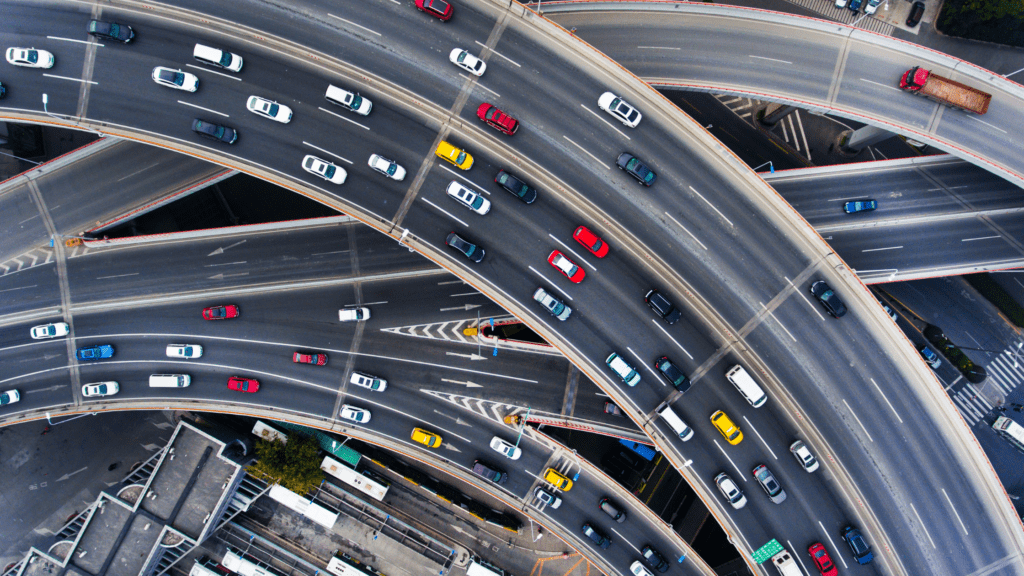
It’s a simple fact that people love the convenience of at-home delivery services, especially since the dawn of the pandemic. These days, we’re relying more and more on delivery services.
Drivers already face enormous challenges when it comes to delivering every single package on their trucks during their shifts. Still, most people probably aren’t aware of the most annoying, uncomfortable, and unhealthy challenge of all: needing to find a bathroom while out on their route.
Why Not Just Stop Along the Delivery Route?
Everyone knows that holding it in isn’t just annoying, it’s also incredibly unhealthy! You may be thinking, “Why don’t drivers just stop when they need to use the restroom?” Unfortunately, it’s not quite that simple.
It’s common for delivery drivers to work long, grueling shifts since most delivery service providers don’t allow drivers to return with any undelivered packages from their routes. Drivers have to hustle to unload all of their deliveries during a single shift.
Furthermore, most drivers are tracked and timed! Any time a driver’s stop clocks in at more than a few minutes, their employer gets a notification, leading to drivers being chastised and, in some extreme cases, sent home for “wasting time” by going to the bathroom.
Where Does One Go?
So where does that leave drivers when nature calls? While they may catch a lucky break with a delivery to a convenient office lobby or coffee shop, more often than not, drivers are forced to make due with makeshift toilet solutions while on the go.
We’ve heard of all kinds of workarounds — plastic bottles, cleaning wipe containers, and even small trash cans in a pinch. These options are simply irritating and unsanitary, especially for female drivers!
WAG Bag®s Are the Solution
Never fear, WAG (short for “waste alleviation and gelling”) Bag®s are the safest, most reliable solution for delivery drivers.
WAG Bag®s are a convenient, portable, and sanitary solution when you need to go on the go. Each bag is filled with a powder that gels and solidifies waste while neutralizing bacteria and odor.
And WAG Bag®s are for everyone! Included in Brief Relief’s huge range of sanitary, portable toilet solutions is the Brief Relief Liquid Waste Bag. This mighty bag holds up to 20 oz of liquid and is ideal for all drivers, whatever their gender.
The WAG Bag® has truly been an overlooked need by many organizations, and it’s one that can help drivers complete their routes without risking their health and comfort.
Trust us, our sister company, Cleanwaste, is the creator of the original WAG Bag®, and years of research went into forming the safety, reliability, and durability of our bags. Brief Relief doesn’t just have a near-perfect satisfaction rate. We’re an industry leader in the innovation of safe, convenient products that allow users to manage waste in a dignified, reliable, and environmentally-friendly way … and all our bags are made in the USA.
To learn more about how Brief Relief’s waste bags are providing safer, more sanitary solutions for all, check out our full product line.

When it comes to employee safety and sanitation across the construction, utility, and mining industries, the Occupational Safety and Health Administration (OSHA) prides itself in making sure employers walk a straight line. So, don’t just guess at OSHA’s regulations for restrooms (hefty fine, anyone?). Instead, let us share them with you. We’ll even provide you with an easy solution at the end to make sure you’re OSHA compliant.
To stay compliant, make sure you check all the following boxes:
Toilets have to be provided for employees according to the following numbers:
| Number of employees | Minimum number of facilities (separate for each sex) |
| Less than 20 | 1 |
| Over 20 | 1 toilet seat and 1 urinal per 40 workers |
| Over 200 | 1 toilet seat and 1 urinal per 50 workers |
And if these numbers weren’t vague enough, OSHA goes on to say that “employers must provide an adequate number of restrooms for the size of the workforce to prevent long lines.”
As you’re very well aware, restroom needs depend on a variety of factors, including fluid intake, medical conditions, medications, air temperature, and more.
For example, during cooler months, you could get away with the minimum number of facilities at the job site. But during warmer months, you may need to double that number as your employees will likely consume more liquids to stay hydrated. (Speaking of which, if you’re looking for the best way to protect outdoor workers in extreme heat, look no further.)
And when it comes to mine safety, the Mine Safety and Health Administration (MSHA) requires surface coal mine operators to provide at least one approved sanitary toilet at a location that’s convenient to each surface work site. They also require one additional approved sanitary toilet for each 10 miners working at a location.
OSHA also requires job site restrooms to be in sanitary condition. Employers should provide:
And, of course, we need to mention cleanliness, as in how often the portable restrooms are cleaned.
While there are no set rules, OSHA requires employers to “regularly” evaluate toilet conditions and set routine servicing schedules for cleaning, waste removal, and supply replenishment. (The servicing scheduling should account for the number of on-site toilets, workers, and shifts.)
Also, keep in mind that these are the minimum restroom requirements set forth by OSHA. Be a decent human. Go above and beyond to make sure your workers’ restroom experience is as enjoyable as possible.
Also according to OSHA, employers with mobile workers must provide readily available transportation that provides prompt access (i.e., less than 10 minutes) to restrooms if they are not available at the work location.
Again with the ambiguity, we know.
But as an employer, this restroom requirement actually does benefit you as well because it cuts down on what we like to call “rolling costs.”
Think about it: Do your employees have to use a company vehicle to travel to a bathroom from the job site or construction site? How much gas is used every trip? How many extra miles is that putting on the vehicle, adding to maintenance costs?
When you consider all those related expenses, your employees’ hourly cost can easily quadruple, if not more.
OSHA also requires that you avoid imposing “unreasonable restrictions” on restroom use, such as those that cause extended delays or limit restroom use—i.e., locking the doors and requiring the employees to ask and sign out a key.
Important note: This still means you as an employer need reasonable restrictions on access to toilet facilities. Whether considered reasonable or not will be up to the discretion of OSHA’s compliance officer if a citation should ever be issued.
OSHA evaluates restrictions on a case-by-case basis, giving careful consideration to the nature of the restriction (i.e., how long workers have to delay restroom breaks) and employers’ explanations.
[Psst—If you feel like nerding out over the exact implications of this requirement, here’s OSHA’s reference number: §1910.141(c)(1)(i). You’re welcome.]
We’d be doing you an injustice not mentioning Brief Relief’s line of products here. (Shameless plug to follow.)
Consider the Brief Relief Lavatory System to be your OSHA-compliant, full-service bathroom solution for mobile crew members. It comes with a privacy shelter, commode, full-sized seat, and supply of single-use Disposa-John waste bags.
To use it, an employee simply sets up the privacy shelter, places the commode inside, and lines it with a Disposa-John waste bag. When they do their doody, the chemical compounds inside the waste bag convert the liquid and solid wastes into an odorless gel. When finished, the employee simply removes the waste bag and seals it closed.
Voila!
And because Brief Relief waste bags are non-toxic and landfill-safe, they can be thrown away in any regular trash can.
Storage is effortless as well. Workers can set up the Brief Relief Lavatory System and fold it away in a carry case in a matter of minutes.
No more bacteria-infested, smelly porta-potties. No more hours of wasted time and money trying to get to and from the restroom sites. No more privacy issues for team members. We created a solution that successfully tackles OSHA’s restroom requirements and common portable toilet problems.
To browse the complete line of Brief Relief products for your workers, visit our shop.